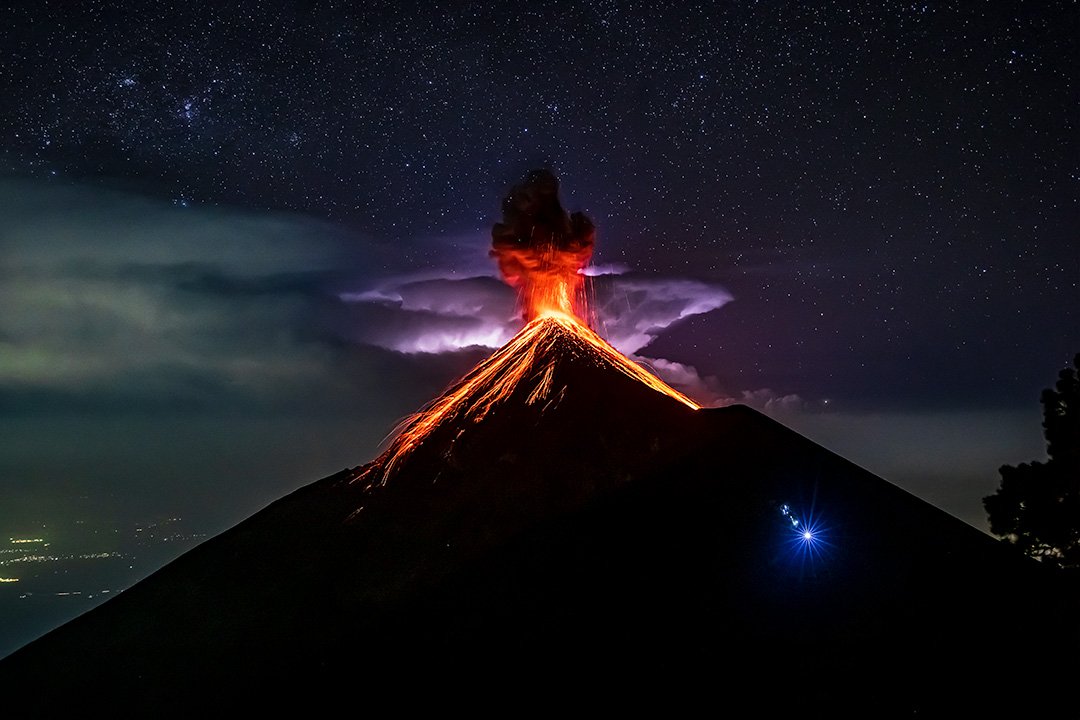If you’ve ever scoured travel blogs or social media for adventures off the beaten path, you might have stumbled upon the Acatenango Volcano hike in Guatemala. The mere mention of trekking to the summit of an active volcano might spark curiosity, excitement, and perhaps a dash of trepidation. But one common question lingers: how hard is it really? The answer, like the climb itself, is layered with complexity, enveloped in both the physical demands of the hike and the profound allure that keeps enthusiasts coming back for more.
First, let’s unpack the hike itself. The trek to Acatenango, which stands at an imposing 3,976 meters (13,045 feet) above sea level, typically encompasses a two-day expedition. Unlike a casual stroll through a park, this trek is a commitment to immerse oneself in the stunning and often mercurial landscapes of Guatemala. Hikers ascend via well-trodden paths through lush cloud forests, which eventually give way to stark, volcanic terrain, culminating at the majestic summit where the sights of the Fuego Volcano can be marvelously witnessed in action.
So, how hard is it, really? For beginners, the challenge may seem daunting. The first leg of the journey is demanding due to the elevation gain. As you ascend, the air thins; every inhalation is a reminder of your ascent. The steep inclines may leave first-time hikers gasping for breath, but this physical exertion is tempered by the breathtaking views that unfold with each step. Those who train prior and acclimatize themselves to high altitudes tend to find the trek more manageable.
Of course, the hike isn’t merely a test of physical endurance; it’s a psychological journey as well. As hikers traverse the often muddy and uneven paths, they confront their limitations and fears, often leading to moments of introspection. The juxtaposition of nature’s grandeur against individual struggle creates a profound experience, pushing adventurers beyond their comfort zones. This is perhaps why so many are drawn to Acatenango—it’s about more than just reaching the summit; it’s about the journey of self-discovery that unfolds along the way.
The weather, an ever-present variable, also contributes to the perceived difficulty of the hike. In Guatemala, conditions can shift from sunlit warmth to icy gusts in a heartbeat. The journey begins on the warmer, lower slopes, where temperatures are generally mild. However, as you rise to the summit, the chill in the air becomes palpable. Hikers must be prepared for this disparity, packing layers and weather-appropriate gear. Those who venture up Acatenango without proper preparation may find themselves battling not just physical fatigue, but also the harshness of the elements.
Acatenango’s fascination also stems from its active neighbor, Fuego Volcano. Watching Fuego erupt from the summit during a sunset is often described as nothing short of surreal. The vibrant orange glow against the darkening sky, coupled with the rumbling sounds of nature, evokes emotions ranging from sheer awe to humble introspection. This captivating spectacle is what draws many adventurers to Acatenango—it’s a chance to witness the raw power of nature firsthand, and that experience springs forth from a type of difficulty that blends thrill with reverence.
For those contemplating the hike, it is not uncommon to experience a mix of excitement and anxiety. A major aspect to consider is the type of guided tour you choose, if any. Some companies provide all-inclusive options, which can make the experience significantly less daunting, as they handle logistical challenges from transportation to food. Knowledgeable guides not only ensure safety but also enrich the journey with insights about the local ecosystems and cultures, enhancing the overall experience.
However, it’s essential to choose a reputable provider, as varying levels of experience can lead to significant differences in how challenging the hike feels. Some groups might prioritize speed over the immersive experience, while others encourage taking the time to enjoy the surroundings. Ultimately, a well-paced, thoughtful climb can transform what seems like a formidable challenge into an exhilarating and enlightening adventure.
Another consideration is time and energy management—key elements on the trail. Many trekkers fare best by taking regular breaks, sipping on water, and snacking to maintain energy levels. This helps combat fatigue and can even elevate the mood, contributing to a more enjoyable experience. Connecting with fellow hikers—sharing stories, laughter, and encouragement—bonds individuals and can serve as a motivating factor when the going gets tough. Many find that the camaraderie and shared hardship often deepens friendships, creating lasting memories long after returning from the trek.
In conclusion, while the Acatenango Volcano hike is undoubtedly challenging, the difficulties serve a higher purpose: they cultivate resilience, foster connection, and provide an unparalleled opportunity to engage with the sublime forces of nature. As you stand atop this mighty peak, basking in the aftermath of your efforts, you’ll realize that the question of how hard it is reveals much more about the journey and those who undertake it than it does about the trail itself. After all, adventure isn’t merely about the destination; it’s about embracing the odyssey that takes you there.
